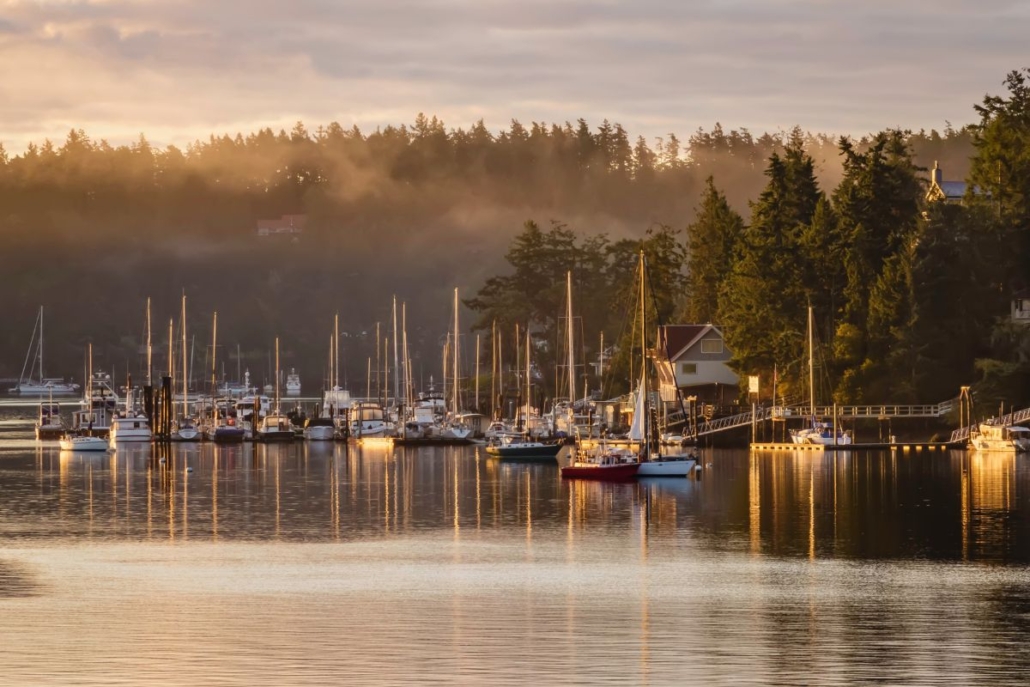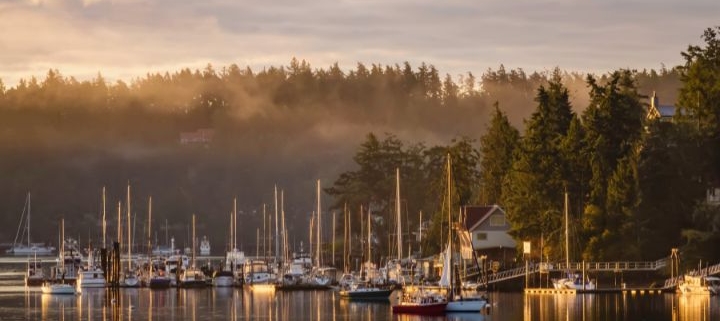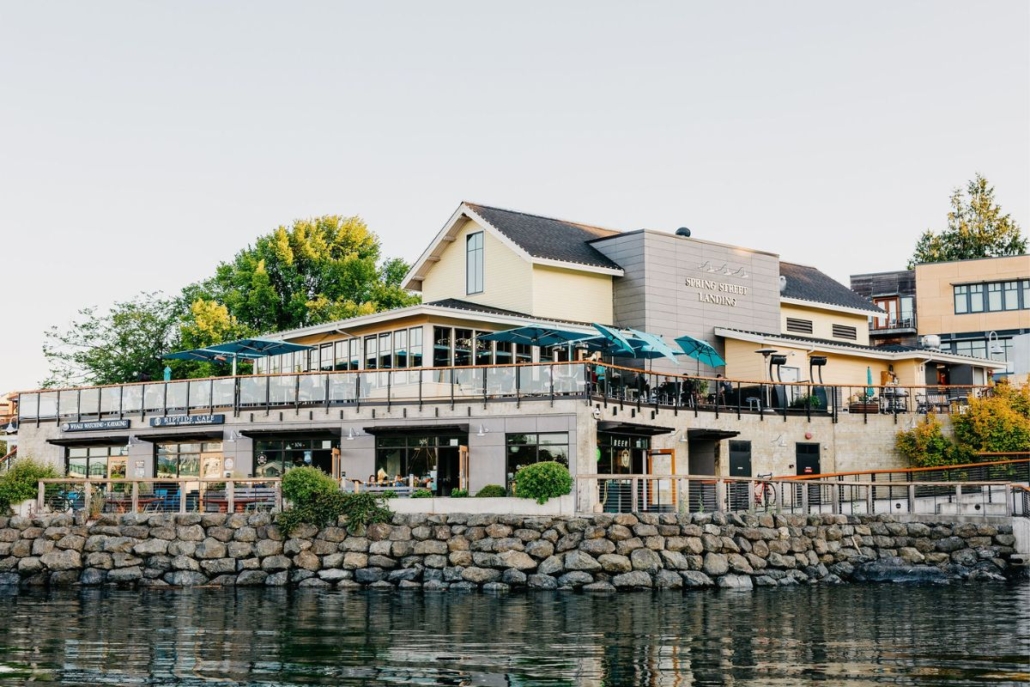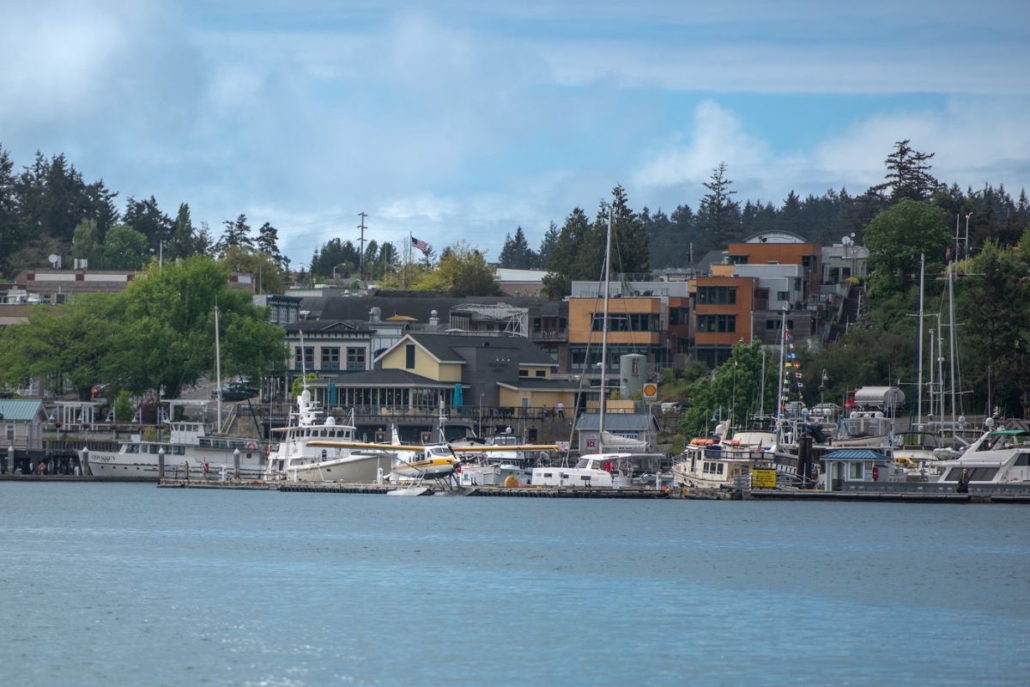San Juan Island Facts

A serene haven, San Juan Island’s natural beauty unfolds in every direction. The rolling hills, lush forests, and rugged coastlines feel almost untouched by time. Here, the air is crisp and tinged with the scent of saltwater. Sea-to-table and farm-to-table cuisine reigns supreme. Artists flourish and community thrives.
Plus, getting to San Juan Island is as easy as a 45-minute flight. Catch a wheeled plane from Boeing Field to Friday Harbor Airport or a seaplane from Lake Washington, Lake Union, or Ruston Way in Tacoma to Friday Harbor Marina or Roche Harbor — all easily accessible and stunning.
Test Your San Juan Island Knowledge
While there’s a lot to love about San Juan, how well do you really know the island? Test your knowledge with this True/False quiz.
True or False: There are no squirrels on San Juan Island.
True. In order for a species to take up residence on the island is must fly, sail or swim. San Juan is home to a variety of wildlife, including deer, rabbits, rats, and foxes. But the bushy-tailed squirrel has not yet made it to the island.
True or False: The longest running war on American soil took place on San Juan Island.
True. The Pig War between England and America lasted from 1859 to 1871. Despite its duration, there was only one casualty — a pig. Consequently, it was this pig’s slaughter that was the catalyst for the ‘war.’
True or False: Eelgrass is a vital habitat for many of the creatures in the Salish Sea.
True! Eelgrass meadows along the shorelines of the San Juan Islands serve as important habitat to SO many creatures in the Salish Sea including dungeness crabs, clams, salmon, and whales. So, whether you like fishing for salmon and crab, or just enjoying wildlife in the islands, protecting eelgrass is vital to preserving the islands we all love. One of the most important ways to protect eelgrass is with Green Boating practices. Show your commitment to Green Boating by taking the Green Boater Pledge with Friends of the San Juans.
True or False: A custom-made tub was installed at Roche Harbor Resort for John Wayne.
True. In the 1960s and ‘70s, John Wayne frequently visited Roche Harbor Resort in Wild Goose — a 1943 U.S. Navy mine sweeper that Wayne fully renovated. During his frequent patronage a custom-made, oversized tub was installed at Roche Harbor Resort to accommodate the actor’s large frame.
True or False: San Juan Island is home to the oldest lighthouse in the San Juans.
False. While a navigational lantern has stood at the site of Cattle Point Lighthouse since 1888 — the lighthouse itself wasn’t built until 1935. The first lighthouse in the San Juans was actually the Patos Island Lighthouse, first lit in 1893. San Juan’s second lighthouse — Lime Kiln Lighthouse — was built in 1919.
True or False: Jet Skis are the best way to explore San Juan Island
False. San Juan County was the first county in the US to ban Jet Skis — helping to protect the islands’ tranquil oasis and pristine coastal environments.
True or False: A Nobel Prize in Chemistry began on a dock in Friday Harbor.
True. In 2008, Osamu Shimomura and two colleagues won the Nobel Prize in Chemistry for the discovery of green florescent protein (GFP). Researching GFP began in the 1961 when Shimomura, then a researcher at Princeton, spent the summer at Friday Harbor Laboratories. (FHL is a remote research facility founded by the University of Washington in 1909. FHL’s mission is to research, education, and outreach to expand global understanding and appreciation of the marine environment and its living resources.)
The discovery of GFP was monumental in the field of biological studies.
This fluorescent marker enables multicolor labeling and is used in the study of interactions between proteins.
True or False: Friday Harbor was named after a sheepherder.
True. Hudson Bay Company sheepherder Peter Paolima grazed his she in the bay around 1830. From the Sandwich Islands (now Hawaii), Paolima translates into ‘Friday.’ The bay was referred to a ‘Friday’s Harbor.’ Eventually the ‘s’ was dropped and the town kept its name!
True or False: Spring Street was named after the beautiful spring flowers that once lined the road.
False. Spring Street was named after the spring that literally bubbled up in the middle of the street! Taking full advantage of the fresh water source (and to help contain the inevitable mess of water pouring down the street), a well was built to water horses, cows, and chickens.
While the well was removed in 1920 and paved over, water continued to seep through the ground. Eventually a culvert was put in to divert Spring Street’s bubbling ways, directing the water into the bay.
True or False: The beaches on San Juan Island are covered in rocks and driftwood.
False. Many of the beaches on San Juan Island are indeed rocky and driftwood scattered. However, there are some, like Grandmother’s Cove, where the sand is smooth and the waters are shallow and protected.








